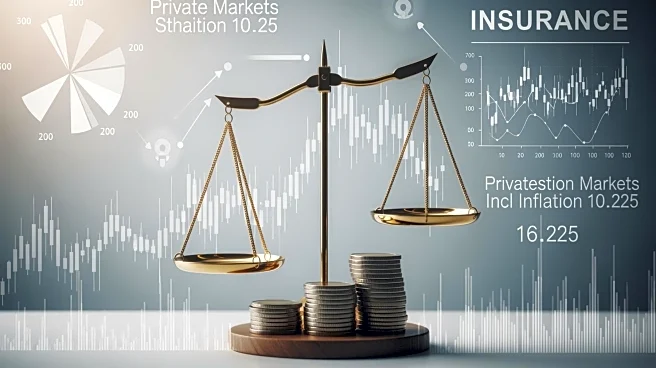What's Happening?
Insurers are increasingly turning to private markets and adopting new operating models to navigate economic volatility, according to BlackRock's 14th annual Global Insurance Report. The report highlights
that inflation is the top concern for insurers globally, with 63% citing it as their primary risk. Despite this, only 12% of insurers plan to increase their overall investment risk exposure in 2025. Instead, 30% are looking to increase allocations to private markets, focusing on private credit, infrastructure, and multi-alternative strategies. The report also notes a trend towards hybrid asset management structures and increased use of AI-driven software for portfolio management.
Why It's Important?
The shift towards private markets by insurers reflects a strategic adaptation to the current economic climate, characterized by inflation and market volatility. This move could have significant implications for the financial industry, as it may lead to increased investment in sectors like infrastructure and clean energy, which are seen as stable long-term opportunities. The adoption of technology and hybrid models indicates a broader trend of digital transformation within the insurance sector, potentially leading to more efficient operations and better risk management. These changes could influence the competitive landscape of the insurance industry and impact policyholders and investors.
What's Next?
As insurers continue to adjust their strategies, there may be increased collaboration with technology firms to enhance their digital capabilities. The focus on sustainability and clean energy investments is likely to persist, aligning with global trends towards environmental responsibility. Regulatory bodies may also respond to these shifts by updating guidelines to ensure that the growing use of private markets and technology in insurance aligns with consumer protection and financial stability goals. The industry's evolution will be closely watched by stakeholders, including policymakers, investors, and consumers.











